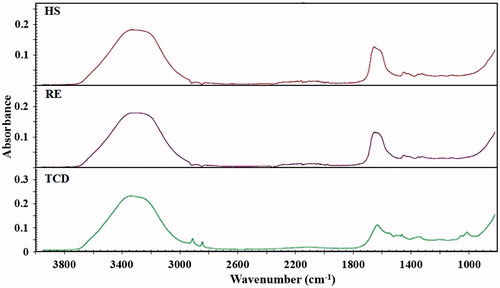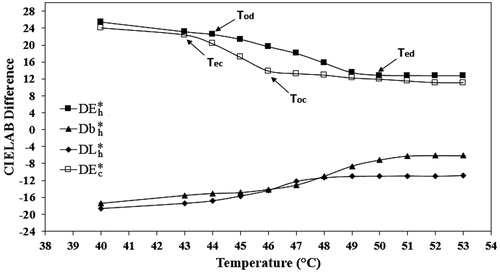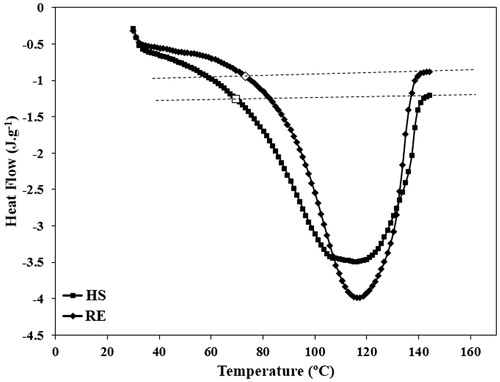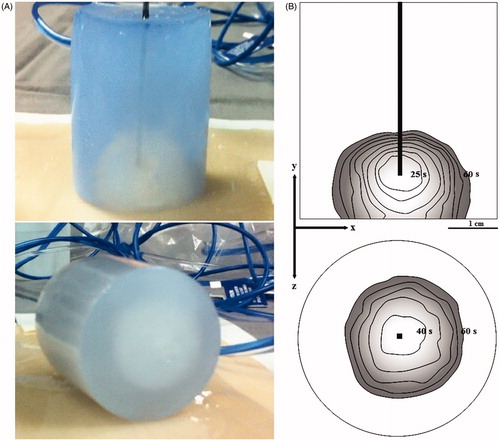Figures & data
Table I. Chemical composition of phantoms used in this study.
Figure 1. The ultrasound images of (A) the reference phantom, and (B) the heat-sensitive phantom. The bright lines at the margins are the optical reflection off the phantom surfaces.

Figure 2. The FT-IR spectra of the dye, reference phantom, and heat-sensitive phantom. Due to small amount of dye used, no significant difference was detected between the FT-IR spectra of the reference and the heat-sensitive phantoms.

Figure 3. The spectrophotometry spectra of the heat-sensitive phantom. Db*: The yellow/blue value; DL*: the darkness/lightness value; DE*: the total colour difference. The ‘h’ and ‘c’ subscripts represent the total colour difference during heating and cooling, respectively. Tod: the onset temperature of discolouration; Ted: the ending temperature of discolouration; Toc: the onset temperature of colouration; Tec: the ending temperature of colouration.

Table II. Acoustic and thermal properties of the reference and heat-sensitive phantoms. Data are presented as mean (SD).
Figure 4. The DSC spectra of two typical reference and heat-sensitive phantoms. The white markers represent the onset temperatures of melting of these two typical phantoms.

Figure 6. (A) The colourless region developed in the heat-sensitive phantom after radiofrequency radiation for 60 s. (B) The estimated isothermal curves due to radiofrequency irradiation on X–Y and X–Z planes of the heat-sensitive phantom.

Figure 7. Magnetic resonance phase images of the heat-sensitive phantom during MRgFUS heating. (A–C) the temperature patterns obtained during the heating of the phantom. (D–F) development of thermal lesion due to MRgFUS treatment. (G) the final temperature pattern after sonication for approximately 19 s. (H) the temperature plot of the focal point during sonication of the phantom.



